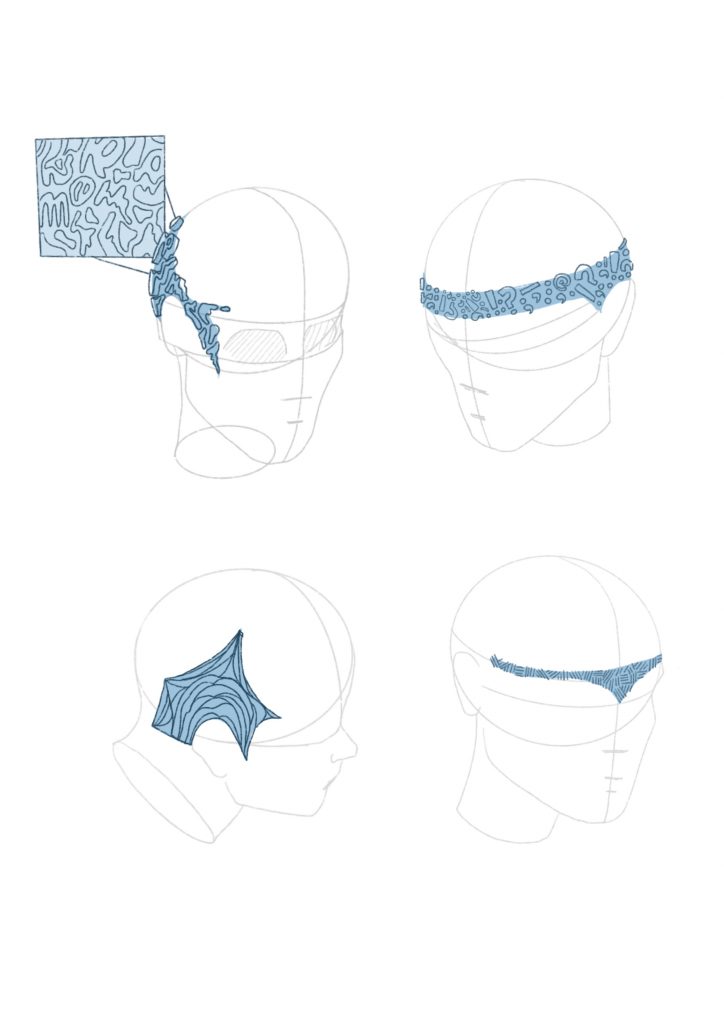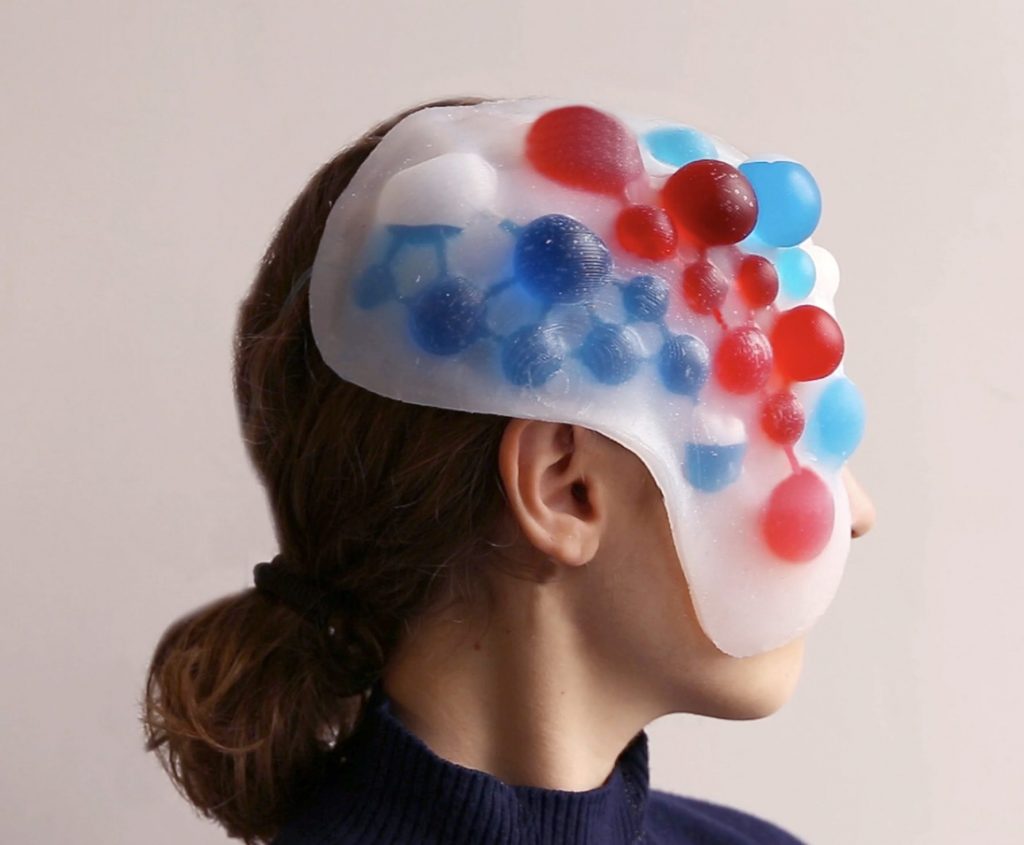- What is the goal?
- This soft robot will be able to convey emotions of confusion from their host. We will detect the pulse of the person and when it beats faster – the robot will be triggered and start to move to evoke a sign. This robot would be used in classroom settings for students and teachers to be in constant communication when learning without vocalizing. It can be discouraging to ask for help if no-one else is saying anything. This application will allow a more comfortable way to communicate.
- What are the essential movements?
- The movement of the robot will consist of extruding in and out through waves/intervals of sections on the head.
- What is the tempo, pace, or speed for each movement?
- The speed will be dependent on the person’s pulse mimicking a type of organ.
- What is the overall size or scale?
- The size would be the circumference of someone’s head – maybe even just the side (still considering the design of the robot)
- What is visual design language?
- Organic patterns that would be reflect a person’s emotions (could be cell-like, patterns, punctuation)
- What specific materials, colors, or textures are essential to convey the idea?
- The materials would consist of white opaque silicone with lights that would turn on when triggered.


Aposema is a personally customized wearable prosthetic mask that responds to the wearer’s expressions, in order to speculate on a near future where we rely on technology to replace our, once natural, instincts. I will need to finalize the user flow –> test various methods of actuation –> design in CAD –> 3d print mold –> fabricate the robot –> assemble –> program –> user test.
- What are all the components of the overall system? E.g. this may include elements of structure, actuation, power, sensing, computation, algorithm.
- Air/liquid channel
- inflation pocket
- pulse sensor
- Are there rigid or mechanical parts in addition to soft materials?
- There may need to be a rigid part when supporting the head.
- Which specific components will be hardest to fabricate? What specific techniques might be included?
- The patterns on the silicone as I will need to be various tests to see what works the best.
https://www.instructables.com/APOSEMA/
https://awrd.com/en/creatives/detail/1077966
https://www.colorado.edu/today/2021/07/20/origami-comes-life-new-shape-changing-materials